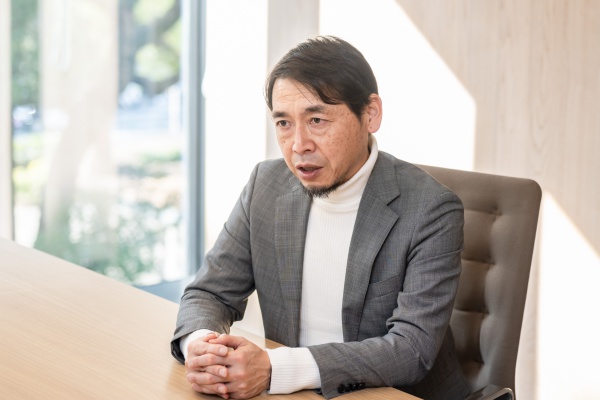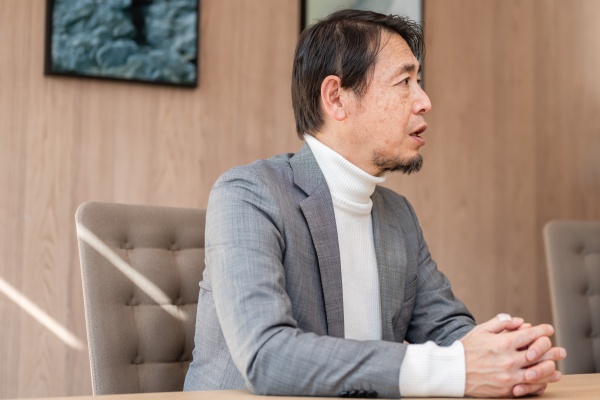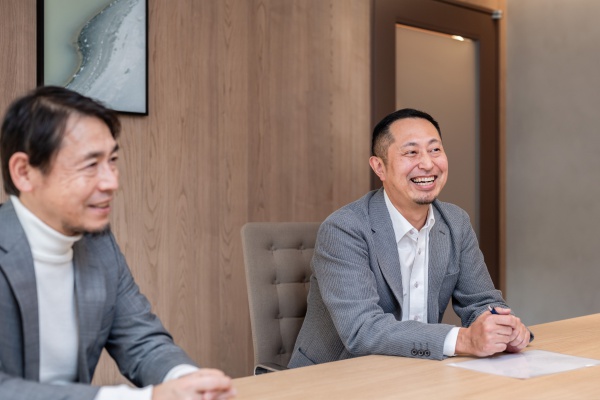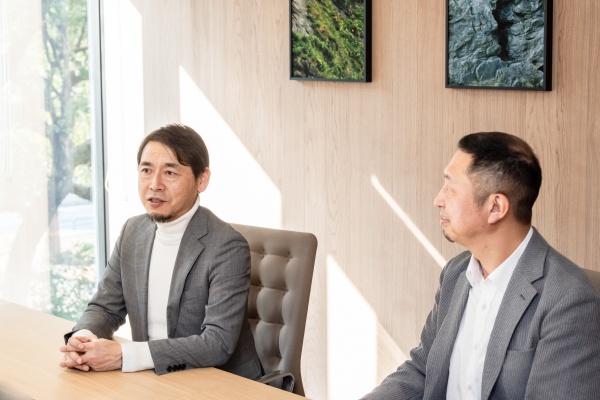
At TIS INTEC Group, we engage in CVC (Corporate Venture Capital) by making principal investments with our own funds rather than through fundraising activities. In our CVC activities, we strive to achieve growth in collaboration with startup companies in the industries and IT domains that TIS INTEC Group is engaged in. The investee featured in this article is Informetis, a pioneer in the use of AI technology in the energy sector. By using AI to analyze electric power-use data, Informetis aims to optimize energy efficiency while helping to improve people’s quality of life (QOL). We interviewed Katsunori Yamagishi, who leads the CVC efforts at TIS, and Taro Tadano, CEO of Informetis, about Infometis’ challenge to become independent from Sony and advance social infrastructure innovation using its proprietary energy disaggregation technology, as well as the synergistic effect of working with TIS.
Certainly, today, it seems that AI is being used for everything, but what makes our company unique is how we specialize in the use of AI for electricity. When it comes to physical aspects, or “things” in other words, IoT is booming similarly to AI. However, in order to apply IoT and AI to the power industry, it requires a certain amount of knowledge and know-how about the unique characteristics of electric power. You can’t just collect data on everything and then use deep learning to learn from it.

We work with time-series data of electric current waveforms, which are high-resolution energy data, and have developed our own proprietary technology to extract multifaced information from them. The foundation for this is our proprietary energy disaggregation technology, which employs the world’s most advanced machine learning algorithms. This allows us to analyze the usage of individual appliances and electrical equipment, identify models, forecast power demand, and predict activities for an entire facility, whether it is a home or a business, without the need to install sensors in each. Through this, we engage in technological development, as well as research and development, that optimizes energy use for both the power grid and consumers.
The information extracted from power-use data can be applied not only to energy efficiency but also to other areas such as healthcare, medicine, logistics, marketing, and insurance by data mining. Through such “multi-level utilization” of cutting-edge technologies such as networks, AI, and machine learning, we hope to benefit society in a wide range of areas, such as optimizing energy use and improving people’s quality of life.

Yes, that’s quite different altogether. Generative AI, like ChatGPT, is first taught the vast number of correct answers that exist in the world and learns through countless repetitions. However, no one has the correct answer for our application, which is to determine the power consumption of individual home appliances and electrical equipment using overall power data. We’ve been collecting data with this unique characteristic in mind for over ten years, and this extremely valuable data has allowed us to develop our own algorithms and know-how. Also, in the case of power-use data, “collecting data” is not something that can be easily gathered from the internet, and even this task was a constant process of trial and error at first.
After graduating in 1991, I joined Sony as an engineer and have since worked mainly in video engineering. However, by my 15th year at Sony, my desire to create something new had grown stronger, and after gaining experience in Sony’s business development and corporate planning departments, I was put in charge of new business creation in the energy sector. When I first heard that a new business in the energy field, a completely new direction from Sony’s previous business, was to be launched, I went to talk to the person at Sony who came up with the idea, and we really hit it off.
Around 2010, we came up with over 30 scenarios for potential business initiatives that could utilize the AI technology that Sony had been researching, including energy disaggregation technology, and then narrowed them down to around five scenarios and came up with an overall business plan.

However, Sony’s business performance deteriorated in what became known as the “Second Sony Shock,” prompting management to return to its roots through a strategy of selection and concentration. This played a significant role in Sony’s decision to abandon the energy field, which was a departure from its typical field. Still, the technology yielded excellent results in demonstration tests, and some in the energy industry said, ‘It would be a shame to see it just disappear; isn’t there some way to use it?’. Of course, I felt the same way. Given the circumstances, several companies came forward to invest. So, with the support of investors, we decided to go independent in 2013.
In 2018, we formed Energy Gateway, a joint venture with TEPCO Power Grid, to promote our next-generation smart meters as social infrastructure.

First of all, one of the major factors was the fact that Informetis is a promising startup that aims to realize a decarbonized society, which is a key theme in TIS’s management strategy. We felt that this company had what it takes to improve energy efficiency in Japan and that, together with the TIS INTEC Group, it could make a significant contribution to society. Consequently, we communicated frequently, and when Informetis decided to raise funds, we were able to make an investment decision in Informetis within a month, which was, in my opinion, a very quick and smooth process for a business company.
There were many other factors that made the company attractive to us, including the fact that its direction was in line with ours. For example, the company’s long history of innovative technologies, such as energy disaggregation technology, as well as its strong relationships with other enterprise companies, made us confident that Informetis would be a good fit with TIS INTEC Group. Also, because the company’s philosophy and direction were purposeful and clear, and because we were able to communicate them effectively within the company, which led to a quick decision to invest.
I have a strong impression that TIS is a very fast decision-maker, not only when it comes to investment but also in a variety of other situations. They also have strong external communicative power, which is encouraging for a company like ours that finds it difficult to communicate with the outside world on its own. We were also impressed with their ability to coordinate activities within the company. Informetis and TIS also share similar business goals, which is one of the reasons why we felt that partnering with them would provide excellent business synergies.

Since we are very conscious of responding quickly to startup companies, it’s nice to hear that you appreciated that. I’m also pleased to hear that we’ve been able to help bridge the gap between startup companies and the TIS INTEC Group.
We are currently working with TIS on a project for a power company in western Japan that will use our technology and plan to conduct a demonstration project in April. Since TIS also has systems designed for the power industry, we are anticipating synergies in that regard as well. Informetis is also looking forward to working with the TIS INTEC Group, with the involvement of INTEC.
A lot of activity will take place immediately after the investment, and the first step will be to achieve at least some kind of result. From there, we would like to promote this within the company as a TIS Corporate Venture Capital initiative in order to pave the way for larger collaborative projects.

Since our departure from the Sony Group, our goal has been to be a startup company that provides services in support of social infrastructure, but we are still a small company. Thus, we are very encouraged by our partnership with TIS, which has strong system development capabilities and the kind of solid foundation that one would expect from a large enterprise. TIS also has far more advanced systems than we do. If we can combine their advanced technologies with ours to provide solutions, I am fully confident that it will bring us much closer to our goal of building a social infrastructure.
While working together effectively on the basis of a good relationship, we look forward to rapid and meaningful cooperation in the form of concrete business initiatives that will lead to mutual growth. We at TIS INTEC Group look forward to working with Informetis for many years to achieve our goal, as stated in our TV commercials, of “Through the power of IT, the TIS INTEC Group will continue to make society’s wishes come true.”